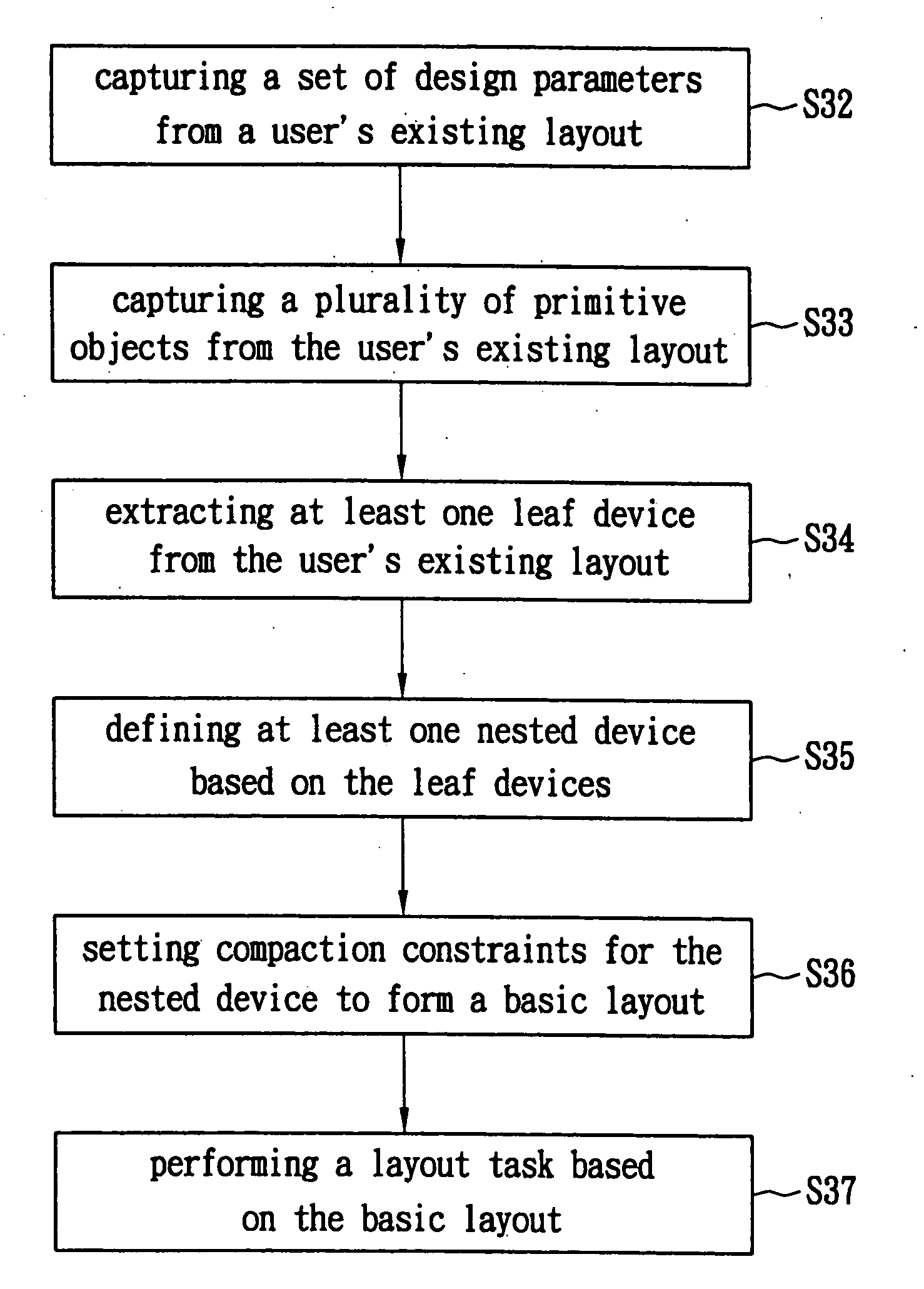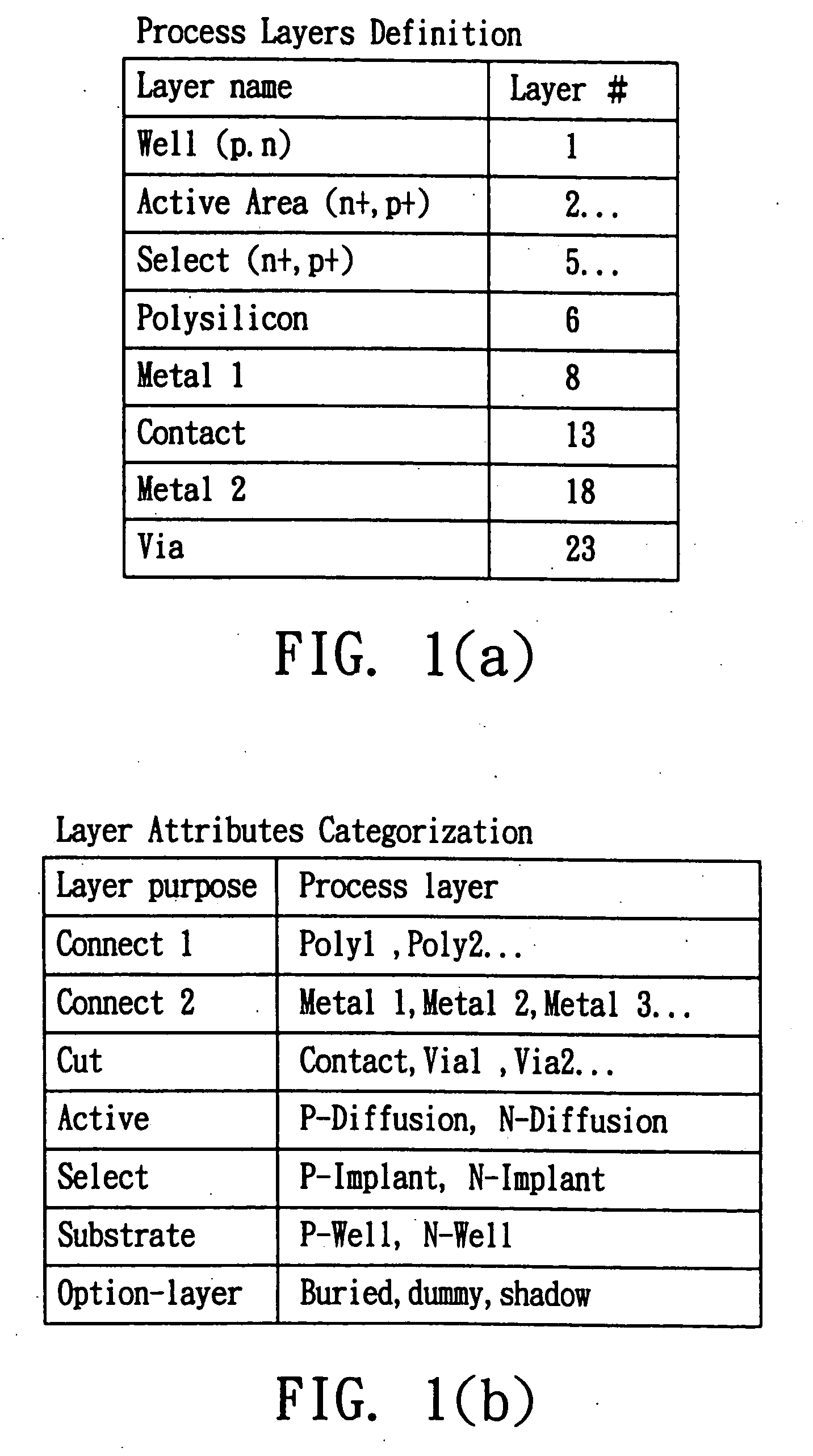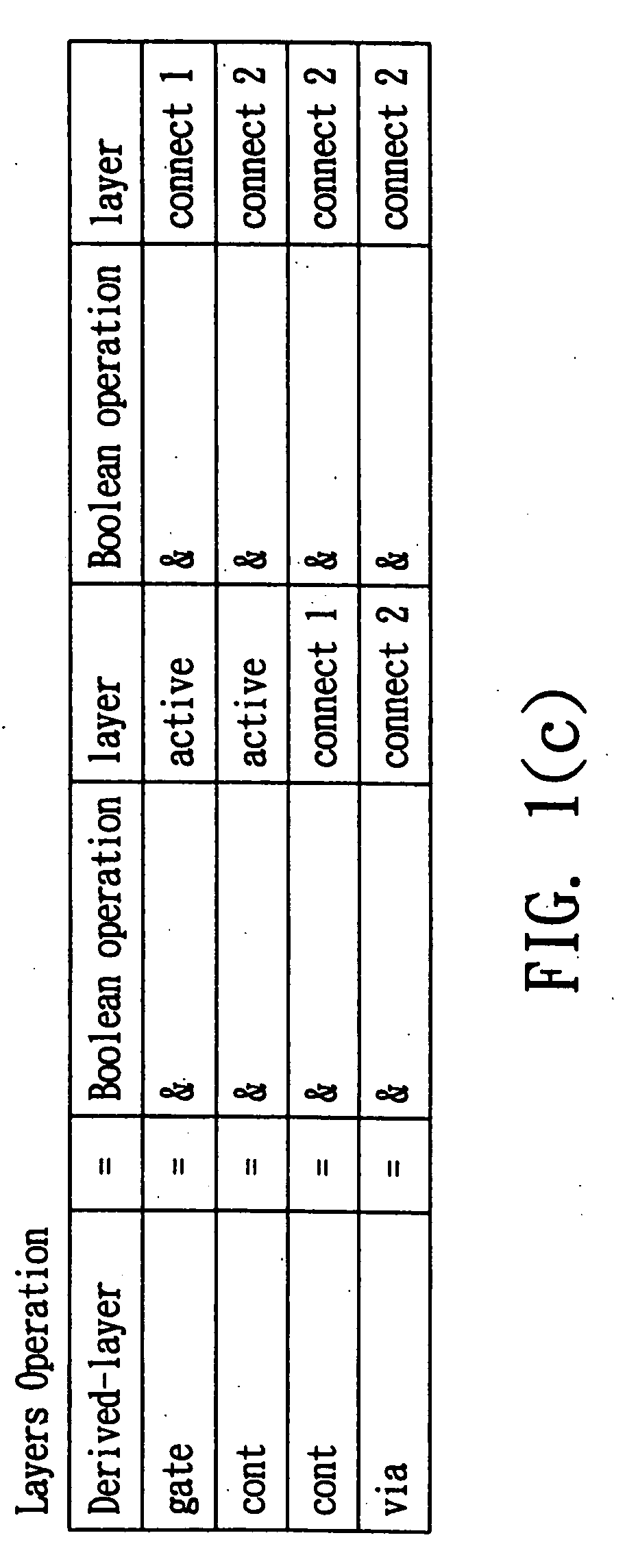Object-oriented layout data model and integrated circuit layout method using the same
a layout data model and layout method technology, applied in the field of object-oriented layout data model and integrated circuit layout method using the same, can solve the problems of time-consuming and error-prone, complicated devices, and complicated geometric layout from the schematic form of an electronic circuit, and achieve the effect of minimal layout design cost and full coverag
- Summary
- Abstract
- Description
- Claims
- Application Information
AI Technical Summary
Benefits of technology
Problems solved by technology
Method used
Image
Examples
first embodiment
[0025]In the object-oriented layout data model, the primitive object is called a PATH object, in which the first set of fields 21 comprises: a type field storing the type of the primitive object, which is determined by the content of the layer1 field; a layer1 field storing the layer usage of a first layer; and a region1 field storing the layer usage of Select, wherein Select represents the layer of P-implant or N-implant (refer to FIG. 1(b)). In the current embodiment, the first layer is Metal, Poly or Active, wherein Metal represents the layer of Metal1, Metal2 or Metal3; Poly represents the layer of Poly1 or Poly2; and Active represents the layer of P-diffusion or N-diffusion. The type of the PATH object, stored in the type field, is determined by the content of the layer1 field. If the layer1 field is Metal, Poly or Active, the type of the PATH object is treated as Metal, Poly or Diffusion, respectively.
second embodiment
[0026]In the object-oriented layout data model, the primitive object is called a GATE object, in which the first set of fields 21 comprises: a type field storing the type of the primitive object which is determined by the layer1 field and the layer2 field; a layer1 field storing the layer usage of a first layer; a layer2 field storing the layer usage of a second layer; and a region1 field storing the layer usage of Select, wherein Select represents the layer of P-implant or N-implant (refer to FIG. 1(b)). In the current embodiment, the first layer is Poly and the second layer is Active, wherein Poly represents the layer of Poly1 or Poly2; and Active represents the layer of P-diffusion or N-diffusion. The type of the GATE object, stored in the type field, is determined by the contents of the layer1 field and the layer2 field. There is only one combination of the layer1 field (i.e., Poly) and the layer2 field (i.e., Active), which form the GATE object of Poly type (refer to FIG. 4(a))...
PUM
 Login to View More
Login to View More Abstract
Description
Claims
Application Information
 Login to View More
Login to View More - R&D
- Intellectual Property
- Life Sciences
- Materials
- Tech Scout
- Unparalleled Data Quality
- Higher Quality Content
- 60% Fewer Hallucinations
Browse by: Latest US Patents, China's latest patents, Technical Efficacy Thesaurus, Application Domain, Technology Topic, Popular Technical Reports.
© 2025 PatSnap. All rights reserved.Legal|Privacy policy|Modern Slavery Act Transparency Statement|Sitemap|About US| Contact US: help@patsnap.com



